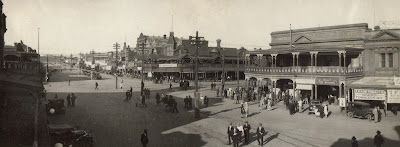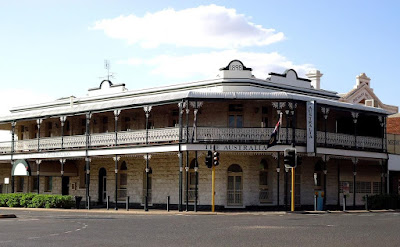The Grand Tour was fascinating to me for distinct reasons:
A] Young Grand Tourists brought back new, refined tastes in painting, architecture, furniture, gardens and music.
B] Our students loved to read beautiful books like Grand Tour: Lure of Italy in the C18th, by Wilton & Bignamini.
C] My own gap year abroad (pre-university) was a special year of maturity and independence – Lassels was right!
By 1690 the upper classes knew that the origins of true nobility lay in the pursuit of wisdom and virtue, not in war. Education was necessary to create a governing class; education that included grammar, geometry and classics, plus religion, the arts, languages and manners. Once formal education was completed, the young man’s informal education was polished by, and integrated with travel. And since only Italy and France had ancient glory, The Grand Tour to Italy and France replaced university life as the final freedom allowed before settling down to marriage and running the family estate.
cultivated Grand Tourists painted by Pompeo Batoni,
Rome, 1774
Only the oldest son could inherit the parents’ estate. So many not-first-born young noblemen saw their future among the growing number of permanent diplomats at foreign courts. Would-be British diplomats were well advised to be familiar with the Continent and to speak French fluently.
Now a new book has been published which I really enjoyed. News From Abroad: Letters Written by British Travellers on the Grand Tour 1728–71, was edited by James T Boulton and T.O McLoughlin and published by Liverpool UP in 2013.
The book acknowledged that Grand Tour was a rite of passage for much of Britain’s upper class during the very late C17th and throughout the C18th. In News from Abroad, the editors gathered letters from five different travellers as they left Britain en route to Rome, via Paris and the Alps. Since there was no rush to get back home to earn a living, these fortunate young people had the luxury of exploring contemporary European life as it existed in the C18th, AND of analysing history and ancient and Renaissance art.
The first decently sized book to bring diverse letter-writers together into a single site, News from Abroad is an excellent collection of primary sources that bloggers, teachers and historically-minded travellers rarely get to read. George Lyttelton’s letters were written 1728–30; he came from a family of aristocrats who wanted George to complete his education abroad. Joseph Spence, tutor to a young noble traveller, was almost Lyttelton’s contemporary: 1730–3.
The last 3 of the book’s stars travelled and wrote the letters 35 years later: James Boswell 1764–6, James Barry 1765–71 and Caroline Lennox 1766–7. The party only ended at the time of the Napoleonic Wars across Europe; parents seemed unwilling to allow their precious sons to travel abroad.
Although some of these private letters have been published previously, I presume they were originally intended only for the eyes of their families back in Britain. Perhaps that made for more honesty and less self-censorship eg when the original budget ran out, young travellers whined and wheedled extra money out of their long suffering parents.
Another thing.... I would have chosen more broadly amongst the Grand Tourists. James Barry was certainly interested in his own art but I’d have loved to read about would-be professional painters, architects and landscape designers for whom Rome represented the last word in design classicism. I wonder if Thomas Coke, 1st Earl of Leicester, left any letters; apparently he spent the equivalent of Australia’s national budget on art during his long tour: 1712-8.
Sir Francis Bacon had recommended in Of Travel 1625 that the things to be observed were the courts of princes, courts of justice, churches and monasteries, the walls and fortifications of towns, as well as gardens, houses, armouries, arsenals, treasuries of jewels, robes, cabinets and rarities. Did the five young travellers in this book pay any attention to Bacon’s list of Must Dos?
Of course not. Young people, a long way from home, were possibly not going to be interested in landscape garden design or royal robes. Sometimes they were interested in chasing skirt or meeting ambassadors or climbing into Vesuvius. Often times they were overwhelmed by the discomforts and dangers they met en route – poor food, dangerous mountain passes, poorly repaired roads, casual VD and broken bones. And occasionally they really wanted to collect treasures for their future homes, once they were married – books, furniture and art objects.
Now a new book has been published which I really enjoyed. News From Abroad: Letters Written by British Travellers on the Grand Tour 1728–71, was edited by James T Boulton and T.O McLoughlin and published by Liverpool UP in 2013.
The book acknowledged that Grand Tour was a rite of passage for much of Britain’s upper class during the very late C17th and throughout the C18th. In News from Abroad, the editors gathered letters from five different travellers as they left Britain en route to Rome, via Paris and the Alps. Since there was no rush to get back home to earn a living, these fortunate young people had the luxury of exploring contemporary European life as it existed in the C18th, AND of analysing history and ancient and Renaissance art.
The first decently sized book to bring diverse letter-writers together into a single site, News from Abroad is an excellent collection of primary sources that bloggers, teachers and historically-minded travellers rarely get to read. George Lyttelton’s letters were written 1728–30; he came from a family of aristocrats who wanted George to complete his education abroad. Joseph Spence, tutor to a young noble traveller, was almost Lyttelton’s contemporary: 1730–3.
The last 3 of the book’s stars travelled and wrote the letters 35 years later: James Boswell 1764–6, James Barry 1765–71 and Caroline Lennox 1766–7. The party only ended at the time of the Napoleonic Wars across Europe; parents seemed unwilling to allow their precious sons to travel abroad.
Although some of these private letters have been published previously, I presume they were originally intended only for the eyes of their families back in Britain. Perhaps that made for more honesty and less self-censorship eg when the original budget ran out, young travellers whined and wheedled extra money out of their long suffering parents.
Another thing.... I would have chosen more broadly amongst the Grand Tourists. James Barry was certainly interested in his own art but I’d have loved to read about would-be professional painters, architects and landscape designers for whom Rome represented the last word in design classicism. I wonder if Thomas Coke, 1st Earl of Leicester, left any letters; apparently he spent the equivalent of Australia’s national budget on art during his long tour: 1712-8.
Sir Francis Bacon had recommended in Of Travel 1625 that the things to be observed were the courts of princes, courts of justice, churches and monasteries, the walls and fortifications of towns, as well as gardens, houses, armouries, arsenals, treasuries of jewels, robes, cabinets and rarities. Did the five young travellers in this book pay any attention to Bacon’s list of Must Dos?
Of course not. Young people, a long way from home, were possibly not going to be interested in landscape garden design or royal robes. Sometimes they were interested in chasing skirt or meeting ambassadors or climbing into Vesuvius. Often times they were overwhelmed by the discomforts and dangers they met en route – poor food, dangerous mountain passes, poorly repaired roads, casual VD and broken bones. And occasionally they really wanted to collect treasures for their future homes, once they were married – books, furniture and art objects.
The Grand Tour
by Mike Rendell, 2022


















